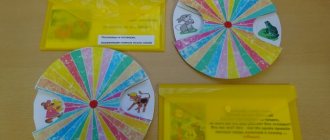Modern preschoolers. What are they?
Modern preschoolers, what are they like?
Today they write and talk a lot about new children - emotional, hyperactive, aggressive, impulsive. What do we know about them? Why do 3- and 5-year-old children do better and know how to use a computer than adults? Why do grandparents worry about their grandchildren's behavior? And it seems that the old methods of education that they applied to their children “do not work.” Smart, persistent, demanding, sensitive, emotional, free. It can hardly be said that our students have remained the same. The child of the new century is created by the television, the computer. From an early age, he is faced with such a flow of information that children of previous generations never dreamed of. Therefore, today's preschooler is more erudite, but this erudition has a downside. In addition to erudition, we all note the increased emotionality of our students. And this is not always a positive quality. Children often react to the most insignificant events too impulsively, and even aggressively; they can also be whiny and capricious. Aggression is also an emotion. An emotion nurtured by television and computer. But how can you teach a child to count and write if he doesn’t know how to do the basics? How can you educate a child if he spent all his days watching cartoons, when there is an active learning of all that is good (fairy tales), beautiful, etc., when a child learns to relate himself and adults in this world, all this becomes dulled and constraint emerges , lack of determination, lack of sociability, fears, disturbances in the emotional-volitional sphere, etc. We adults correct our own mistakes. And mistakes are harder to correct. After all, it is not the child’s fault that his parents allow him to watch cartoons for 2-3 hours, and foreign ones at that. Where have our good fairy tales gone, our Cheburashka cartoons, these kind and slightly naive heroes? Why did Pokimon and Smeshariki supplant Cheburashka? And children playing computer games, without even noticing, sometimes become cruel and embittered. They draw using a computer, and hence their motor skills are weak, they sometimes even get confused: “In which hand should you hold the pen?”
Modern children have increased body tone, excitability, modern life is full of rhythm for their parents, everyone is in a hurry to earn money from morning to evening, and pregnant women work until childbirth, laying this agility and nervousness already during pregnancy. What about the products? What foods does a pregnant woman and baby consume in the future? Which? Cola, Fanta, packaged juices, artificial baked goods, etc. What about TV, computer? What cartoons do our children watch? Yes, question......
Modern children often cannot concentrate, do not show interest in simple activities, they cannot be stopped, they cannot be captivated by games. The personal development of children at all times is directly related to the heroes. What are the heroes for a child now? Spider-Man, Teenage Mutant Ninja Turtles, Superman, etc. Modern children often have reduced imagination and creative activity. Children are focused on quick results. REMOVE and POSITION.
Today it is important to provide each child with attention and care for his mental and physical health, and for this only through the joint efforts of the family and kindergarten it is important to form in children a sense of emotional well-being and psychological comfort, so that the little person can joyfully and fully live the most difficult and responsible life. period of your life – CHILDHOOD. It is “here” and “now” that the foundations of a person’s personality are laid. And if we adults don't realize this, we have nothing to look forward to in the future.
Prepared by: psychologist Tatiana Anatolyevna Prosvirnova, MADOU TsRR DS “Umka”.
Features of the development of a modern child
The modern world is constantly changing. The speed at which our lives are undergoing transformation is much faster than twenty or thirty years ago. In the recently departed twentieth century, a child developed in a small society (family, yard company, pioneer organization) with a clear connection to a specific adult. Today, the child is placed in a situation of broken connections and a chaotic flow of information without structural and logical connections. Modern children are very different not only from those described in their works by I. G. Pestalozzi, J. A. Komensky and V. A. Sukhomlinsky, but also from their peers of the last decade of the twentieth century. Social changes have led to psychological changes. According to psychologists, there have currently been shifts in the onset of crises at 7 years of age and adolescence. Thus, the crisis that children of the last century went through before entering school (in the preparatory group of kindergarten) is now being experienced by younger schoolchildren (at 7–8 years old). And this entails a revision of teaching methods in primary school. Girls now pass the puberty crisis three years later, and boys four years later [7]. Currently, children are growing and developing in a post-industrial information society. From birth they are exposed to modern high-tech achievements. All technical innovations become part of the life of the younger generation. Computer games, interactive toys and museum exhibitions, commercials and new films. How does technological progress affect a child’s psyche? What is a modern child like? Today, scientists are seriously puzzled by this issue. At this time, attempts are being made to comprehensively study the modern preschooler [8]. The opinions of practicing teachers are also taken into account. In 2001, a round table was held at which teachers of Moscow preschool institutions “drew” a portrait of a modern child based on their own observations. Positive characteristics: developed, inquisitive, smart, erudite, liberated, free. Among the negative ones: impulsive, capricious, whiny, pugnacious, aggressive, pedagogically neglected, brought up by TV [3]. Specialist in the field of early language development N. A. Gorlova [2] names the following features of modern preschool children: the predominance of system-semantic consciousness over system-structural consciousness; increasing body tone, perseverance, demandingness, sensitivity, emotionality, and the need to perceive information; excitability, hyperactivity, anxiety, aggressiveness. Children are well informed. They talk about “adult” topics, watch TV series, understand the intricacies of love lines, remember well everything that happens to the heroes of passions and retell the episodes in detail to their grandmothers and mothers. Preschoolers sometimes make such unexpected conclusions and conclusions in non-childish situations that adults begin to seriously think about the premature maturation of modern children. This issue is controversial. Rather, it is “hearsay”, under which, unfortunately or fortunately, there is no experience. Great awareness has a downside. Modern children are by no means ahead of their age in the development of thinking and mental abilities. Moreover, due to health problems, many have delayed mental and speech development. Most 5-year-old children need help from a speech therapist. The modern preschool child speaks a lot (if he speaks), but poorly. Teachers are sounding the alarm. The lowest rates of implementation of the training and education program most often relate to the “Speech development” section. Not only the “Coherent Speech” section suffers, but also the “Dictionary” section. Children's awareness does not lead to an increase in vocabulary. In this situation, I recall a problem described in one of the old textbooks on child psychology. The child, under the influence of his parents, talks about the theory of the nucleus, but cannot follow the elementary verbal instructions of the teacher. The famous psychologist E. O. Smirnova cites UNESCO data that 93% of modern children from 3 to 5 years old watch TV 28 hours a week: “The first generation of “screen children” is growing up” [5, p. 254]. She draws disappointing conclusions about the impact of television viewing on children's mental development. The first and most deplorable is delayed speech development. Primitiveness and poverty of speech are noted. “Speech coming from the screen remains a meaningless set of alien sounds; it does not become our own. Therefore, children prefer to remain silent and express themselves by shouting or gestures” [5, p. 255]. An uncontrolled information flow leads to a lack of emotional-personal and emotional-business communication with the mother in infancy and early childhood, which leads to an increase in the number of children who do not master the curriculum in kindergarten and school. Neuropsychologist T.V. Akhutina sees the main reason for academic failure in a decrease in voluntary attention (along with poor ecology and stress). A bright toy attracts the child’s attention for a long time not on its own, but in interaction with the mother, when positive emotional reactions and a revitalization complex arise. The scientist writes: “For the formation of stable attention, it is necessary that the deep departments work well enough, and they are the ones who suffer most from troubles during the period of pre- and perinatal development. The maturity of the deep sections affects the child’s activity and his ability to maintain wakefulness. Another “component” of attention is the frontal sections... These sections act as organizers and conductors of behavior: they must interact harmoniously with other parts of the brain... The fact is that the brain is “finished” during active work and the number of nerve cells increases during the development of the child from birth up to a year... If a child, during his early development, does not receive enough information from the outside, if the nerve cells do not work, then their physiological death occurs. First of all, we mean tactile and visual information coming from the mother” [4]. Observations of children show that in kindergartens the phenomenon of the absence of so-called “average children” has begun to occur. Children in the group are divided into those who achieve and those who fail, those who master and those who do not master the curriculum. Whether this observation is a pattern or a feature of an individual preschool institution needs to be checked on a larger sample. The next conclusion of O. E. Smirnova about the influence of watching television programs on children is “the inability to self-absorb, to concentrate on any activity, lack of interest in the matter. This type of disease is especially pronounced in learning and is characterized by hyperactivity, situational behavior, and increased absent-mindedness” [5, p. 256]. Modern children are in constant, continuous movement, it is difficult to keep them in one place. During concerts, in cinemas, they move freely in an unfamiliar space. A child can simultaneously listen to a fairy tale and build with a construction set. Children are hyperactive. In organized activities they often cannot concentrate and still need playful and interesting moments. The time of voluntary concentration, characteristic of age, did not increase. The younger generation has a “clip consciousness”, fed by advertising and music videos. Indeed, films by cult directors, from which it is impossible to protect children's perception, are distinguished by intermittency, sharp transitions from one storyline to another, when the viewer must retain the pictures in memory so as not to lose understanding of the meaning of what is happening. Or maybe this is precisely what the director’s creativity is aimed at? The aesthetics and means of expression of the new cinema correspond to modern trends, otherwise it would not be in demand. And finally, the third conclusion of O. E. Smirnova is “a sharp decline in the imagination and creative activity of children. Children lose the ability and desire to keep themselves busy. They make no effort to invent new games, to write fairy tales, to create their own imaginary world. They are bored with drawing, designing, and inventing new stories. They are not interested or captivated by anything. Lack of self-content affects children's relationships. They are not interested in communicating with each other. It has been noticed that communication with peers has become more superficial and formal: children have nothing to talk about, nothing to discuss or argue. They prefer to press a button and wait for new ready-made entertainment” [5, p. 257]. Although modern preschoolers are technically savvy and can easily handle televisions, CDs, electronic and computer games, they build with construction sets in the same way as their peers of previous years, without being ahead of them in anything. A serious problem is the “withdrawal” of role-playing games from the life of a modern child. Experimental studies of role-playing games in preschoolers aged 6–7 years have shown that the game does not reach the highest level of development (according to D. B. Elkonin). Consequently, school motivation, generalization, the ability to plan, and build relationships with peers are not formed at the proper level. The result is a decrease in indicators of readiness for learning in primary school. Despite the fact that researchers and practitioners have thoughts about the need for role-playing games for a modern preschooler, the positive answer is unconditional. Moreover, Federal state requirements for the structure of the basic general education program of preschool education again put forward play as the basis for organizing all types of activities of children attending kindergarten. Among the factors influencing the mental and personal changes of a modern child, D. I. Feldshtein names the orientation of society and, accordingly, children towards consumption, marginalization, the growth of deviations, and the restriction of children's independence by parents. The result is a “rejuvenation” of diseases treated with antidepressants, increased anxiety and aggressiveness, decreased behavioral control and the development of addictions. There were children who did not want to grow up. Research has shown that this is due to the “inheritance of the experience of family failures,” which occurs as a result of children’s experiences of parental problems in the family and professional spheres, brought into the child’s everyday life [7]. Summarizing the fundamental academic research of recent years, Academician D.I. Feldshtein outlined a circle of 16 significant changes in modern children and adolescents [7]: 1. A sharp decline in the cognitive development of preschool children. 2. Increased emotional discomfort and decreased desire for active action. 3. The departure of role-playing games from the child’s life and, as a consequence, a decrease in voluntariness and the motivational-need sphere. 4. Decreased curiosity and imagination in preschoolers, underdeveloped internal plan of action. 5. Insufficient development of fine motor skills and, consequently, graphic skills in preschool children indicate the underdevelopment of the corresponding brain structures, including those responsible for voluntariness. 6. Significant decrease in social competence and independence in decision making. 7. Increase in screen addiction. 8. Limitation of communication with peers, the appearance of feelings of loneliness, confusion, and lack of self-confidence. 9. Increase in the number of children with emotional problems. 10. Decreased selectivity of attention and evaluation of information, decreased working memory capacity in adolescents. 11. Asthenia of physique and decrease in muscle strength. 12. Major forms of mental illness increase by 10–15% every ten years. 13. Increase in the number of children with disabilities. 14. Increase in the number of gifted children. 15. In adolescence – growth of individualization, criticality towards adults, search for the meaning of life and assertion of one’s uniqueness. 16. Changes in the value orientations of adolescents (I place – intellectual: education; II – volitional: perseverance, achievement orientation; III – somatic: good health, presentable appearance). In the hierarchy of values, the last places are occupied by moral, emotional, cultural and social ones. It is interesting to see what a modern preschooler will become as an adult. This can be done by analyzing the value orientations of modern teenagers and young people (i.e., future parents). In 2005, studies conducted by a scientific team led by L. V. Kashirina were published [6]. Scientists have compiled a psychological portrait of young residents of Khabarovsk at the turn of the 20th and 21st centuries. The value orientations of young people aged 17, 24 and 29 were identified. For the longitudinal survey, a scale of 18 values was compiled. The same questions were asked to respondents upon reaching a certain age. The survey results showed significant changes in the value orientations of Khabarovsk youth. In particular, the number of young people who consider themselves free and financially secure has decreased significantly. Health is given one of the first places as a value, while at the same time the number of respondents who consider themselves healthy and are making efforts to maintain their health is decreasing. The attitude towards marriage as an institution of the family has undergone serious transformations. Many recognized their families as unstable, the number of civil marriages increased, and the number of people wishing to have children decreased. The values that received the least number of choices were “knowledge,” “creativity,” and “the happiness of others.” The leading values of 17-year-olds were health, love and good friends. Scientists note an increase in tension due to anticipation of the future and obstacles that will have to be overcome. For 29-year-olds, material security and happiness in the family are important. At the same time, they revealed a discrepancy between life plans and achievements, an increase in individualism against the background of a decrease in collectivism and altruism. Modern youth choose higher education (often for the sake of a diploma), success, material well-being, and a good specialty. Professions have emerged from which there are high expectations of decent material remuneration - businessman, economist, lawyer. Professions that are not of interest are teacher, scientist, farmer, artist. Young people are not embarrassed by the fact that there is an overabundance of specialists in the economic and legal sectors and, therefore, a high risk of unemployment. According to recruitment agencies, there is demand for blue-collar and engineering professions. Khabarovsk respondents in most answers presented the following requirements for work: high wages, prestige of the company, comfortable working conditions and “interesting” work performed. Along with the increased demand for a prosperous life, young people showed an increase in tolerance for possible violation of the law and condemned forms of behavior: marriage of convenience, travel without a ticket on public transport, obscene language, accepting bribes and tax evasion. And also to such “little things” as taking something that is “bad”, getting it by force or cunning. Young people do not hide their positive attitude towards actions condemned in society and are confident in their own rightness. There is a distortion of moral values. Young people devote their leisure time to the computer and listening to music. And sleep... Apparently, modern stress, including information, and the high pace of life affect the endurance of a young body. Among the positive trends, Khabarovsk scientists identified an increase in patriotism and pride in the history of the Fatherland and democratic transformations [6]. In 2007, the All-Russian research project “Psychological Portrait of a Generation” was launched. The socio-psychological study covered about 5,000 children from the first to the eleventh grades. An attempt was made to find out children's ideas about goals for the near future, about the dream of adulthood and the business to which they want to devote their lives. Based on the results of their answers, the children were divided into groups depending on their life goals, worldview, and self-image. 15% of the sample were called “whole individuals.” These are those who see their life as a “single strategy”, implemented even in changing conditions, and for whom the dream acts as a compass in solving life’s problems. The largest group (up to 50%) were “effective functionaries”. These are children who set specific professional and career goals that allow them to earn good money, support their family and children, open their own business, and become influential and rich. It has been noted that the number of children - “public figures” and “housewives”, has decreased, that is, those who want to benefit society, help people, and those who set their goal to create a good family [1]. Thus, the problem of the development of the modern child remains relevant. Serious interdisciplinary research is needed at the intersection of psychology, pedagogy, sociology, and physiology. Structuring the information flow, its “pedagogical” reorientation will solve a number of problems of education. The identification of the characteristics of modern preschool children is an important material for updating the content and organization of the educational process, the direction of pedagogical activity in the direction of the personality of a person of the future. Literature 1. Gobova E., Ignatova O. Psychological portrait of generation. Typology of ideas about myself // School psychologist. 2007. No. 6. URL: https://psy.1september.ru/article.php?id=200700612. 2. Gorlova N. A. Modern preschoolers: what are they? // Hook: education, child, student. 2009. No. 1. P. 3-6. 3. Generation in diapers or a collective portrait of a modern preschooler. Round table // Preschool education. 2001. No. 9. URL: https://dob.1september.ru/2001/09/1.htm. 4. Generation inattentive. Interview with T. Akhutina // "School Psychologist". URL: https://psy.1september.ru/article.php?id=200201810. 5. Smirnova E. O., Lavrentieva T.V. Preschoil in the modern world. M.: Drof. 2008. 270 p. 6. Stepura I. Tribes young. Unknown // Russian newspaper - the Far East. 2005. No. 3912. October 28. 7. Feldstein D.I. Priority areas of psychological and pedagogical studies in the context of significant changes in the child and the situation of his development // Bulletin of the Higher Certificate Commission of the Ministry of Education and Science of the Russian Federation. 2010. No. 4. S. 20–32. 8. School of L.V. On the state and prospects for the development of scientific research of the institution of the Russian Academy of Education “Institute of Art Education” // Pedagogy of art: electronic scientific journal. 2010. No. 4. url: https://www.art-education.ru/ae-magazine/archive/nomer-4-2010/shkolyar12-2010.pdf.
Description of other character traits of the child
The document drawn up by the teacher, describing the level and degree of personal development, must indicate the child’s performance, reaction to comments and demands, ability to manage his behavior, character traits (modest, quiet, impulsive, etc.). The description of the personality of a preschooler should also reflect the state of psychophysical processes: attention (stable or not), ability to concentrate, switchability, perception of phenomena (appropriate or not for age), the child’s time representations, development of memory and verbal-logical thinking. The characteristics of the child in the preschool educational institution from the teacher must be dated. The teacher's signature is placed on the last page. The document is endorsed by the head of the preschool educational institution.
Currently, interest in childhood is becoming more and more intense, and the image of a child is occupying an increasingly significant place in the world of adults.
In modern science, research continues on certain patterns of level-by-level development of personality in ontogenesis. So, D.I. Feldstein considers childhood as a special phenomenon of the social world, which the scientist defines functionally, meaningfully and essentially. Functionally, childhood is an objectively necessary state in the dynamic system of society, the state of the process of maturation of the younger generation towards the reproduction of the future society. In essence, childhood is a process of constant physical growth, accumulation of mental new formations, mastery of social space, reflection of all relationships in this space, definition of oneself in it, one’s own self-organization, which occurs in the child’s constantly expanding and increasingly complex contacts with the adult community and other children. Essentially, childhood is a special state of social development, when biological patterns associated with age-related changes in the child largely manifest their effect, “submitting” to an increasing degree to the regulating and determining action of the social.
In contrast to the approach common in psychological research, when childhood is usually considered “disconnected” - a separate characteristic of infancy, early childhood, preschool age, etc. is given, D.I. Feldstein proposes to isolate the main formative line of development of a growing person throughout his childhood, which allows us to trace the real continuity of the process of growing up. The need to isolate a single formative principle is determined by the fact that the indicators of maturation available for different periods of childhood (in which individual mental new formations are identified) do not correlate with the integrating property, which is at the same time a general, constantly developing and self-developing phenomenon in ontogenesis, in relation to which all are determined. acquired neoplasms.
Usually, when characterizing the general orientation, such a component is emphasized as the child’s appropriation of social norms, values, and the level of organization of the life of the society in which he functions. But at the same time, the child’s individualization is considered, as a rule, outside of social connections, only as an individual’s reaction to them, which is actually opposed to those social relations in which his individuality is formed. Therefore, it is necessary to identify a kind of “end-to-end” definition of growing up, revealing the meaning and content of what develops in the child as the main thing in this growing up.
Each new generation of people appropriates the level achieved by humanity, taking it for granted. For example, today a child from an early age can freely handle a TV, a computer, and masters all this as already solved problems, a starting position. Modern children have become, on the one hand, much more active in their reflection aimed at the world around them as a whole; on the other hand, more infantile in terms of social orientation. Serious shifts have occurred in the motivational and need-based sphere of children - there is the emergence of new, often very controversial, values, an alarming shift in motives, etc.
To a large extent, this is due to the loss and lack of stable socially developed guidelines, clarity of positions in relation to the reality of the adult society itself. Children of preschool age are just entering the social world, they accept, often even before full awareness, the moral norms of relationships and behavior in human society, they perceive the world first of all with their feelings, and then with their consciousness.
Comparative studies in different areas of child development (intellectual, moral, physical, aesthetic, development of play, communication) conducted by T.I. Ponimanskaya, showed that modern children, just like children of the last century, learn, for example, such norms of relationships as mutual assistance and willingness to help a friend.
However, unlike children of the 80s of the last century, modern preschoolers express new opinions: of course, you need to help, but, firstly, only when you are asked for it, and you don’t need to take the initiative yourself, and, in -secondly, “when I see that he himself was working, but did not have time, and when he was chatting, there is no need to help him.” Differences also emerged in the manifestation of kindness and selflessness. Modern children are not in the mood to give their toy to other children “just like that,” but “if he gives you something, then you can.”
Such changes in children, in their assessments of the actions of their peers, in determining their own line of behavior are explained primarily by social changes.
In the 90s of the last century, during the period of revision of life guidelines and values, the focus on individuality, on the independence of people from each other, on focusing on oneself and one’s successes began to prevail. Children, as we know, reflect all the features of the adult world; they actively appropriate their forms of interaction with the outside world, with people.
A complex and inadequate situation has developed in building relationships between children and the adult world. On the one hand, the adult world seems to have moved closer: children have become more independent, relaxed in relation to adults, and more confident, which is associated with greater availability of information. On the other hand, at the same time, the adult world has moved away, since adults not only become less involved with children, but also do not appear before them in a clear position of their attitude and their demands.
We found that the scientific understanding of the uniqueness of children's nature began to take shape in the second half of the 19th century on the basis of the affirmation of the idea of the child's self-worth. But only in the 20th century did society develop a steady interest in childhood as a social phenomenon, and an entire “children’s” industry was formed, covering both the material and spiritual spheres. It was during these centuries that through the efforts of F. Frebel, N.F. Pestalozzi, M. Montessori and other pedagogical reformers developed socio-psychological and cultural ideas about the special status of childhood. At the present stage, psychologists interpret childhood as a complex multidimensional phenomenon, which, having a biological basis, is mediated by many sociocultural factors.
Specialists of the Department of Preschool Pedagogy of the Russian State Pedagogical University named after. A.I. Herzen under the leadership of A.I. Gogeberidze highlighted some characteristic features of a modern child:
- Formation of civic position. A modern child loves his homeland, his family, his peers and friends, and wants to make life better, more worthy and more beautiful.
- Formation of a value system. A modern preschooler has a good understanding of himself, his immediate environment, his present and future. He is ready to evaluate various phenomena and events of life from different points of view: interest, utilitarianism, usefulness, aesthetics, knowledge. Modern children are more focused on the future, they look to the future with confidence, easily talk about where and with whom they will work, how much they will earn to spend, what kind of family they will have, how many children they will have, in what conditions they will live and how they will relax. By older preschool age, children are able not only to accept a learning task, but also to understand its meaning for themselves. As a rule, it is associated with the successful future of the child: I will learn to read - I will do well at school - I will go to college - I will get a great job! - I will live well! Children's activities acquire more and more personal meaning for the child.
- Manifestation of the position of an active figure. The internal reserves of a modern child are revealed in different types of their preferred activities: visual, gaming, musical, literary. But, unlike his peers of previous years, he confidently combines them, unites them with each other, because he is more comfortable this way and can do everything. He organically weaves his ideas about this world into different spheres of life. He is the bearer of a subculture that is inherent only to a preschooler and distinguishes him from children of other ages and adults,
- The focus of the modern preschooler on communication, it is necessary to recognize that the modern child is lonely. He very often lacks communication with mom and dad, peers, he gets lost in the world of voluminous information, he wants to talk and act together.
- The orientation of the modern preschooler towards knowledge of man and nature. A child is interested in a person from all sides: as a biological and social being, as a creator and bearer of culture. Children love to compare themselves and others, play at people of different professions, draw themselves and their peers, look at portraits and illustrations of fairy-tale characters, fashion magazines with men and women, play educational games related to the study of a person and his world, ask a variety of questions about him questions.
- Modernity, in tune with the technological progress of the modern preschooler. This is a modern person who can master a mobile phone and computer faster than an adult. He listens to and watches the same songs and TV shows with his parents; goes with family and friends to cafes and restaurants, goes abroad on vacation, travels; navigates car brands and fashionable clothing and perfume designs, stores and products.
Let us also note that the life of a child of the 21st century has not only changed very much, but is also closely related to the capabilities of the parents. It can be noted that children’s judgments about life, their preferences, and interests depend on the area of residence. The child’s growing interest in people and his thirst for communication with peers allows us to conclude that priority should be given to the personal and social sphere.
It seems important to think about what tasks of education and development would unite children with different life experiences and growth conditions, and to find specific ways to solve this problem.
Literature: 1. Study of the problems of preschool childhood in the multicultural space of Russian cities. Results of an interregional study. Monograph. [Text] - St. Petersburg: Publishing house of the Russian State Pedagogical University named after A.I. Herzen, 2009. – 521 p. 2. Feldshtein, D.I. Psychology of growing up: structural and content characteristics of the process of personality development: Selected works [Text] / D.I. Feldstein. – M.: Moscow Psychological and Social Institute; Flint, 2004, 2nd ed. – 672 p.
Organizational aspects
The document is prepared with the participation of a psychologist, speech therapist and teacher. A ready-made description of a kindergarten student is provided for:
Free legal consultation
We will answer your question in 5 minutes!
Free legal consultation We will answer your question in 5 minutes!
Call: 8 800 511-39-66
Ask a Question
- Admission to school.
- Solutions to legal issues.
- Consultations with a psychiatrist.
- Commissions for transfer to a speech therapy group or specialized educational institution.
- Children with disabilities who attend kindergarten.
- Guardianship and trusteeship authorities.
This is also important to know:
How to return money to the buyer
The pedagogical characteristics of a preschool educational institution student is an official document that is invalid without the signature of all persons filling out the form. The seal and signature of the head of the institution is also required.








